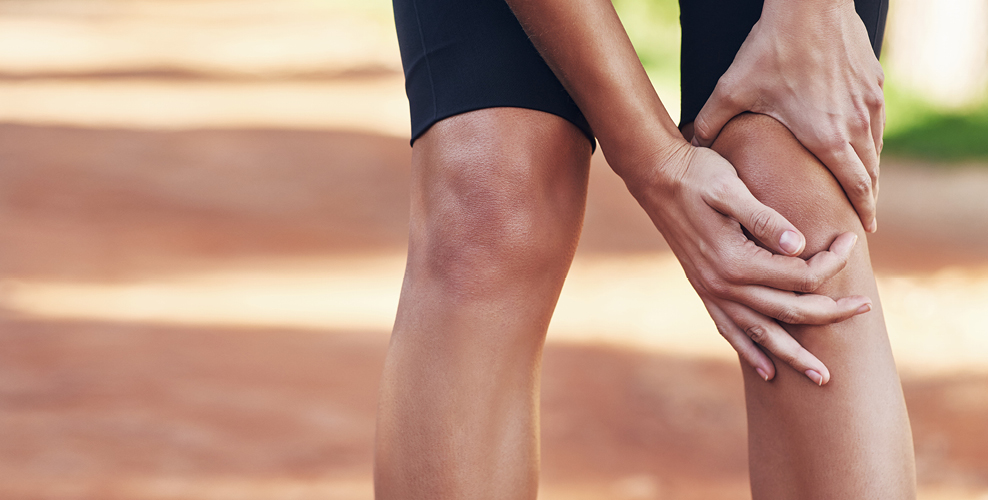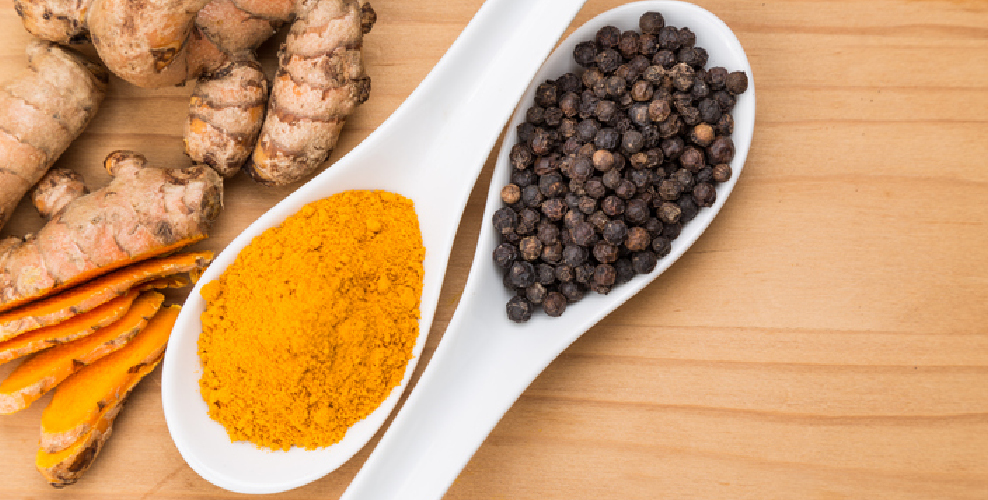Achy joints? Our top tips and herbs that can help

Could it be osteoarthritis?
Osteoarthritis is the most common form of arthritis in Australia. In 2022, around 2.1 million (or 8.3%) of the population of Australia were estimated to be living with osteoarthritis. 1
Osteoarthritis is a condition, which is characterized by the breakdown of the cartilage that lies over the ends of bones in joints, and usually gets worse over time. It mostly affects the knees, hands, and hips, but can also affect other joints such as the spine and ankles. 1
It most often occurs in people over 40 to 50 years of age, but it can develop earlier than that in some people. 2
The most common symptoms of osteoarthritis are joint pain and stiffness, which may get worse with activity and feel better with rest. Other common symptoms to look out for include:
- Red and swollen joints
- Clicking noises or grating sensations when a joint is moving
- Weakness of affected joints 2
As osteoarthritis progresses, it can become difficult to perform everyday tasks. At first, pain is felt during and after activity, but as the condition progresses, pain may be felt even at rest. Affected joints can also become swollen and tender which has an effect on fine motor skills. 1
But it's not all doom and gloom – thankfully there are lots of things you can do that can help support the health of your joints.

What to eat to support joint health
What you eat has a profound impact on your health – including your joint health. Here are some of the best tips we've found for you to help use your diet to help support joint health and reduce joint pain.
- Follow a Mediterranean diet – it has been seen to improve osteoarthritis-related outcomes 3, and chronic musculoskeletal pain 4
- Ensure that you eat a wide variety of fresh fruits and vegetables each day 5
- Include plenty of omega-3 fatty acids in your diet from oily fish, nuts and seeds 5
- Incorporate flavonoid-rich berries into your diet wherever you can 5
- It may be helpful to avoid plants from the Solanaceae family of vegetables – this includes tomatoes, potatoes, eggplants, and capsicum 5
- Try to reduce your intake of saturated fats 5
Lifestyle tips to keep your joints happy
It's not just what you eat that affects your health, it's also the little things you do each day. Read on to find out how adopting some supportive daily habits can make a significant difference in managing symptoms of osteoarthritis.
- Undertake regular exercise – ideally something every day, and ensure that you vary the types of exercise. Be sure to incorporate muscle strengthening and muscle stretching activities 5
- Maintain a healthy weight. Additional weight can place extra stress and strain on your joints 6
- If you are overweight, undertake sensible weight reduction. 6 You may like to speak to a healthcare professional, or see a naturopath in private practice for support
- Consider having regular massages. Regular massage has been reported to improve pain, joint stiffness, physical function and range of movement 5
- Acupuncture is also something to consider, as it has been seen to be helpful for reducing pain 7
In addition to diet and lifestyle changes, there are a few herbs that can be helpful for reducing the symptoms of mild osteoarthritis.
Turmeric can help relieve mild joint pain
Turmeric isn’t just an ingredient in your favourite curry, it also has a long history of medicinal use over the centuries in Ayurvedic (Indian) medicine. Today, turmeric is well known for its curcumin content, one of the curcuminoids (which is a group of active compounds) responsible for its beneficial effects.
Turmeric’s vibrant yellow-orange colour also comes from the curcuminoids, which perform a range of therapeutic activities in the body including:
- Reducing mild joint pain and stiffness
- Decrease symptoms of mild osteoarthritis
- Relieving inflammation
Curcuminoids are also antioxidants that help reduce the formation of free radicals in the body (a balance between antioxidants and free radicals is vital for normal physiological function).
A clever complex - Curcumin C3 Complex®
While it might be tempting to reach for the spice jar in your kitchen to help ease your aching joints, there is a catch! In their natural state, the curcuminoids in turmeric aren’t very well absorbed by the body. You’d need to take extremely large quantities of the turmeric in your pantry in order to reach the dose of curcuminoids that are needed for therapeutic benefits.
That’s why at Fusion Health we use Curcumin C3 Complex®, a highly concentrated turmeric extract that enables us to provide consistent levels of therapeutically active curcuminoids. As well as containing curcumin, Curcumin C3 Complex® also contains the curcuminoids demethoxycurcumin and bisdemethoxycurcumin, which stabilise curcumin and the contribute to the antioxidant effects of the extract.
Black pepper for better curcumin absorption
Black pepper (Piper nigrum) has been used as a spice from ancient times throughout the world.8 Black pepper contains a compound called piperine – which is known to help promote the bioavailablility of other substances.9
In Ayurvedic medicine, black pepper is often taken together with turmeric to enhance its bioavailability .10
At Fusion, we’ve combined Curcumin C3 Complex® with a piperine extract called BioPerine® to help promote its bioavailability.
The benefits of Boswellia
Boswellia serrata, or boswellia is an herb that has been widely used in Ayurvedic medicine for centuries where it has been prized for its anti-inflammatory properties, and often used to relieve symptoms of mild osteoarthritis.
In recent years Boswellia extracts have gained a lot of attention and have been studied extensively. Researchers have found that Boswellia extracts can help reduce symptoms of mild osteoarthritis, including:
- Supports joint mobility and relieves mild joint pain and stiffness
- Helps promote healthy joint function and joint health
- Helps reduce cartilage loss and helps support joint cartilage health
At Fusion Health we use a patented, synergistic extract of Boswellia serrata called AprèsFlex®.
AprèsFlex® is a sustainable and socially responsible ingredient, harvested via good stewardship guidelines. It is a clinically studied extract and has been found to reduce mild joint pain in as little as 5 days in people with mild osteoarthritis.11
The gifts of Ginger
Ginger has been used as both a food and medicine since ancient times.12 In Ayurvedic medicine it has been used traditionally to relieve symptoms of mild arthritis. While in Western herbal medicine it is traditionally used to:
- Support blood circulation to the peripheral areas of the body (like the legs, hands and feet),
- Relieve digestive discomfort and symptoms of indigestion, as well as
- Relieve dysmenorrhoea (painful periods)
Introducing Fusion Curcumin Advanced: curcuminoids + black pepper, ginger and boswellia
Fusion are proud to introduce our new and improved Fusion Curcumin Advanced formulation, which combines curcumin C3 complex® with ginger and a clinically trialled11 boswellia extract (AprѐsFlexⓇ), which has been shown to reduce mild joint pain at 5 days. This product also contains piperine (BioPerine®) from black pepper, to help promote curcumin’s bioavailability.
Each tablet contains herbal extracts equivalent to 22.46g curcumin (standardised to provide 333.3mg curcuminoids), 400mg boswellia AprѐsFlexⓇ (standardised to beta-boswellic acids 6.67mg), and 250mg ginger.
Always read the label and follow the directions for use.
REFERENCES
1 - Australian Institute of Health and Welfare. (2024). Osteoarthritis. Retrieved from https://www.aihw.gov.au/reports/chronic-musculoskeletal-conditions/osteoarthritis. Accessed 26-Jul-2024.
2 - HealthDirect. (2024). Osteoarthritis. Retrieved from: https://www.healthdirect.gov.au/osteoarthritis. Accessed 26-Jul-2024.
3 - Buck AN, Vincent HK, Newman CB, Batsis JA, Abbate LM, Huffman KF, Bodley J, Vos N, Callahan LF, Shultz SP. Evidence- Based Dietary Practices to Improve Osteoarthritis Symptoms: An Umbrella Review. Nutrients. 2023; 15(13):3050.
4 - Kurapatti M, Carreira D. Diet Composition's Effect on Chronic Musculoskeletal Pain: A Narrative Review. Pain Physician. 2023 Nov;26(7):527-534.
5 - Hechtman, L. (2011). Clinical Naturopathic Medicine. Elsevier Australia.
6 - Sarris J, Wardle J. (2010) Clinical Naturopathy: An evidence-based guide to practice. Churchill Livingstone, Elsevier, Chatswood, Australia.
7 - Corbett MS, Rice SJ, Madurasinghe V, Slack R, Fayter DA, Harden M, Sutton AJ, Macpherson H, Woolacott NF. Acupuncture and other physical treatments for the relief of pain due to osteoarthritis of the knee: network meta-analysis. Osteoarthritis Cartilage. 2013 Sep;21(9):1290-8.
8 – Shoba G, Joy D, Joseph T, Majeed M, Rajendran R, Srinivas PS. Influence of piperine on the pharmacokinetics of curcumin in animals and human volunteers. Planta Med. 1998 May;64(4):353-6.
9 - Hewlings SJ, Kalman DS. Curcumin: A Review of Its’ Effects on Human Health. Foods (Basel, Switzerland). 2017;6(10).
10 - Modern Ayurvedic. 2024. Ayurveda's herbs – Turmeric. https://www.modernayurvedic.com.au/blogs/ayurveda/ayurvedic-medicine-turmeric. Accessed 30-Jul-2024.
11 - Vishal, A. A., Mishra, A., & Raychaudhuri, S. P. (2011). A double blind, randomized, placebo controlled clinical study evaluates the early efficacy of aflapin in subjects with osteoarthritis of knee. International journal of medical sciences, 8(7), 615–622. https://doi.org/10.7150/ijms.8.615
12 - Braun L, Cohen M. (2015) Herbs and Natural Supplements: An Evidence-based Guide. Volume II. (4th edition). Elsevier, Australia.


















